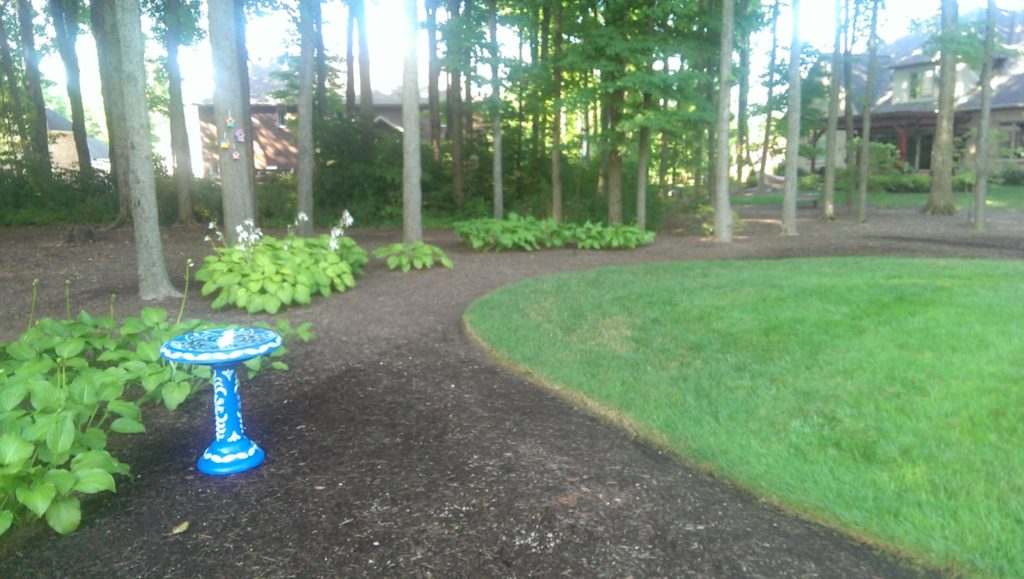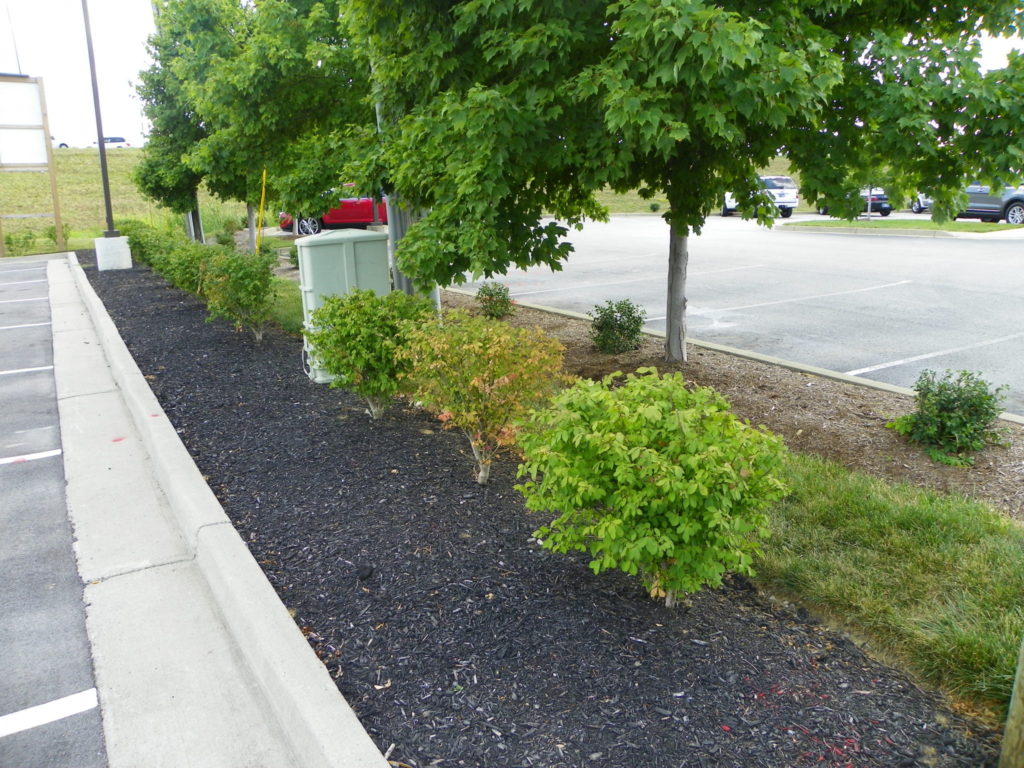On May 2nd an apartment fire in Greenwood occurred that reportedly originated in the mulched landscape beds. Unfortunately 56 renters were displaced that day, but fortunately no injuries were reported. Several Indianapolis news organizations reported on the origins of the fire that included a couple of quotes that were not entirely accurate.
One of those interviewed stated that the most likely cause of the mulch catching fire was due to a cigarette being discarded, which happens quite often during dry periods and is correct. The quote that stood out was, ‘The mulch itself can decompress over time, decompose, and that decomposition can cause a chemical reaction that can actually cause the mulch to catch on fire by itself.’ This statement, taken at face value, can make sense to some folks. Think about wet hay catching on fire in a barn, or the mulch fire that occurred in Southern Indiana in April. Organic material can catch fire. The problem with this quote, which was stated on scene of the fire, is that mulch is not going to spontaneously combust when spread in a landscape situation.
A few factors are necessary to be present in order for organic material to start a fire without an outside source (i.e. flame, hot equipment, sparks, lightning strike, etc.). These includes microbes, moisture, carbon and nitrogen, and a large quantity of organic material.
The reason that organic matter (compost) heats up is due to microbial action breaking down the carbon. When composting, the carbon to nitrogen ratio (C:N) is important because if there is not enough nitrogen, the microbes use what’s there for their metabolic needs. The C:N of wood mulch is about 400:1. For aerobic (oxygen present) composting (which is the most rapid type of composting), there needs to be a C:N of about 20:1 to 40:1. Based on this ratio alone there would be very little breakdown of the wood chips, especially wood chips that were just applied to the landscape.
Moisture also needs to be present for composting to occur. Microbes prefer the moisture to be between about 40-70% to effectively break down the carbon. Since central Indiana was in a minor drought, the moisture content wouldn’t be close to 40%. One of the reasons that mulch makes for an effective weed control tool is due to the fact the mulch makes a dry layer between the soil and air. Weed seeds can’t germinate in a dry area.
Typically mulch is spread in a landscape around three inches, but can be spread as thick as five inches. Rarely, if ever, will mulch in a landscape be more than five inches. Six, seven, even ten inches isn’t enough quantity to start a fire. Some say that 15 inches is around the minimum for enough microbial action to start a fire. This is certainly not the case in a landscape.
Mulching with wood chips provides many benefits for the landscape, both seen and unseen. We typically think of the aesthetics of mulch, but that is just one benefit. Other benefits include weed control (reduced pesticide usage), improved soil health, root zone temperature moderation, and moisture retention. Strictly from a plant health standpoint, organic mulch is vital. We can debate the aesthetics all day: natural vs. black vs. red vs…….
So, to circle back, did the fire start because the microbes in the mulch produced enough heat to start a fire? The simple answer is most certainly not. Cigarettes that aren’t fully extinguished and are thrown in the mulch is the most likely source of the fire. For multi-family housing, it’s important to have proper receptacles to prevent the likelihood of fire via mulch.
Refernece:
Cooperband, L. 2002. The art and science of composting. University of Wisconsin Madison Center for Integrated Agricultural Systems. 17 pgs.

